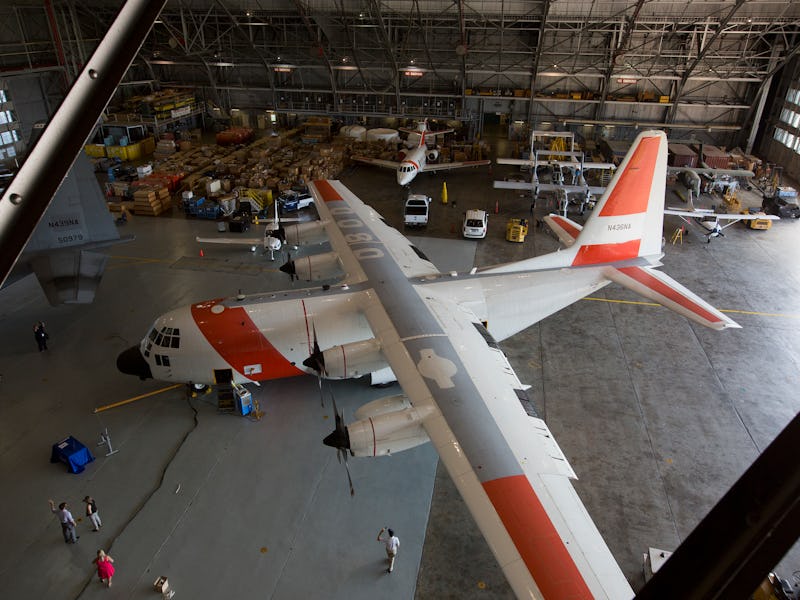This New NASA Project Tracks Greenhouse Gases From a Plane
The Atmospheric Carbon and Transport-America project will (hopefully) help us fight climate change more intelligently.

This summer, NASA kicked off the first stage of a large-scale, airborne greenhouse gas study. The Atmospheric Carbon and Transport-America project focuses on the movement of two specific greenhouse gases: carbon dioxide and methane. By tracking and studying how exactly those two gases cycle through our atmosphere, scientists hope to better understand how they contribute to climate change. This is all being done from the air, which is pretty cool.
The project is currently in the first of five campaigns covering four seasons (summer will be repeated, since it seems the most likely to be more biologically active). Each campaign will visit each of three regions in the eastern United States; about five weeks remain in this first campaign. Since the team needs time to analyze the data after each season, the campaigns won’t be sequential from a seasonal perspective — meaning the next time they fly will be this winter. The whole thing is spread out over two and a half years.
“The first days of the campaign have gone pretty well,” said Ken Davis, the Principal Investigator on the project. “We’ve studied how the movement of a cold front into a region influences greenhouse concentration. A big part of the focus is how atmospheric motion transports greenhouse gases in the atmosphere; we want to understand that in order to be able to use concentration measurements to infer the sources and sinks.”
“Sources and sinks” is a phrase deeply embedded into the project. A source refers to an emission into the atmosphere; a sink is what takes up that emission. Fermentation, for example — like the release of methane from animal agriculture (think cow pastures) — is a source. So is fracking, or any process that burns a fossil fuel. We can calculate fairly well what methane sources are, but we need more data about their effect on carbon dioxide sinks — the repositories where the released gases end up.
“We’d like to help quantify those,” Davis said. “We know how much [methane] is in the atmosphere, and we can see its increase — it’s more than doubled from pre-industrial times - but in the last 15 years … it’s changed, and we don’t know enough to extrapolate why it’s happening.”
ACT-America is focused on two critical greenhouse gases: carbon dioxide and methane.
Basically, the teams needs to figure out how the atmosphere transports these two gases from Point A to Point B. They’re going to measure the winds and the gases from the aircraft and then compare the data to existing models, and hopefully be able to pinpoint the relevant areas. To infer where sources and sinks tend to coalesce in the long term, they need to use long-term measurements. Ideally, they’d be able to do this at more locations, spread across the planet.
Davis and his colleagues began planning the mission five years ago, and it’s been underway in its current form — that is to say, funded — for about a year. Terrestrial ecosystems are removing about one quarter of all fossil fuel emission sources from the atmosphere. But globally, there’s a net sink, and what we don’t know is where those sinks are occurring, what ecosystems are driving them.
“We know there are ecosystems with large and dynamic carbon dioxide fluxes,” Davis said. “And we know it’s likely at northern latitudes. There’s still debate, but evidence points more toward northern latitudes than the tropics. These have large fluxes and may be where the sink is occurring.”